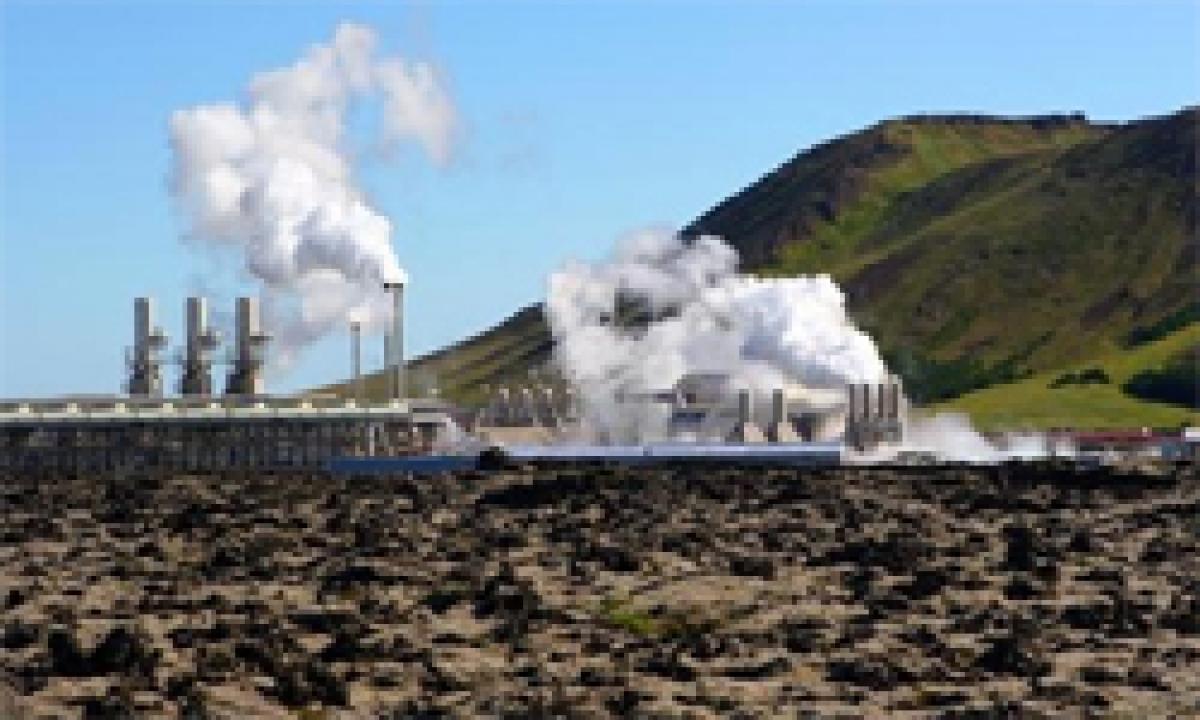Live
- Boxing Day Test Weather Forecast: Rain Delays Expected on Day 3 and Day 4 in Melbourne
- Baby John Twitter Reviews: Varun Dhawan Impresses, But Fans Feel the Remake Lacks Theri's Charm
- Pakistan Air Strikes Kill 46 in Afghanistan, Taliban Confirms Amid Rising Tensions
- ACB Launches Investigation into Formula E Races Held in Hyderabad Last Year
- Mega Job Mela in Madhapur on December 28: Explore Employment Opportunities in Hyderabad
- New Mizoram Guv likely to take charge next week
- Barroz 3D Movie Review: A Visual Treat for Mohanlal Fans, Mixed for Others
- Donate Blood, Save Lives: BJP Hosts Mega Blood Donation Camp in Aiza
- Azerbaijani Airliner Crashes Near Aktau, Kazakhstan: 32 Survive, Over 30 Feared Dead
- Union Minister Bandi Sanjay Kumar to Visit Jogulamba Gadwal District on December 27, 2024
Just In

x
Highlights
As part of its explorations for geothermal energy, the Centre of Excellence in Geothermal Energy (CEGE) at the Gujarat-based Pandit Deendayal Petroleum University (PDPU) has found success by drilling the state\'s first geothermal borewell in Ahmedabad.
 As part of its explorations for geothermal energy, the Centre of Excellence in Geothermal Energy (CEGE) at the Gujarat-based Pandit Deendayal Petroleum University (PDPU) has found success by drilling the state's first geothermal borewell in Ahmedabad.
As part of its explorations for geothermal energy, the Centre of Excellence in Geothermal Energy (CEGE) at the Gujarat-based Pandit Deendayal Petroleum University (PDPU) has found success by drilling the state's first geothermal borewell in Ahmedabad.
In common parlance, geothermal energy is about tapping the heat under the earth to generate electricity.
It's clean and sustainable. Resources of geothermal energy range from the shallow ground to hot water and hot rock found a few miles beneath the Earth's surface, and down even deeper to the extremely high temperatures of molten rock called magma.
Coming in just over a year after the PDPU, an industry-government initiative to create talent pool for the energy field, completed pre-feasibility studies in the geo-thermal energy sector, it was around 2.30 a.m. on Thursday when hot water up to 50 degrees Celsius to 55 degrees Celsius temperature started gushing out of the 1,000-foot deep borewell and continued to flow.
Anirbid Sircar, the university’s director, told IANS, “Not much work has been undertaken in Gujarat on geothermal energy and exploitation of hot water. We are the first to initiate an attempt to generate electricity with the help of geothermal energy.”
He said hot water gushed out from the well at an unexpected velocity of five litres a second.
The hot water produced from the well would be used for power generation using a technique termed as Organic Rankine Cycle (ORC), he said.
The ORC, he said, is basically a process through which heat is transferred to a fluid at a constant pressure. The vapour thereof is run into a turbine that drives a generator, which in turn, produces electricity.
The process is also called a cycle since the spent vapour is subsequently condensed to liquid and recycled.
With its first success, the CEGE now plans to drill another well at Utthan, about three km from Dholera village. The other sites identified for the purpose are in Gandhar and Unai.
B.K. Behera, a professor at the Geo-thermal Energy unit of the university: “We have so far conducted pre-feasibility studies for the entire state of Gujarat with the help of geological, geochemical and remote sensing studies and identified five geo-thermal provinces.”
“Geo-thermal energy has the potential to generate and deliver sustainable supplies of clean, renewable base load. Many government and private sector companies in the country are exploring opportunities to develop this valuable resource,” Behera claimed
“Various geothermal prospects have been identified in Himalayan belt, Cambay basin and Central India,” Behera added.
According to the International Geothermal Association (IGA), as much as 10,715 MW of geo-thermal power was online in 24 countries in 2013 and is projected to touch around 20,000 MW by the end of next year.
The geo-thermal initiative of the PDPU, which started off in 2007 near state capital Gandhinagar, is the only one in the country to have received government funding for its activities, says Behera.
Research findings of T. Hari Narayana, Director of Gujarat Energy Research and Management Institute (GERMI), suggest that going by geo-scientific studies Puga area in eastern Ladakh is the most promising geothermal field. But lack of deep sub-surface information hampers the evaluation of the resource here.
His research refers to the Tatapani hot spring zone in Surguja district of Madhya Pradesh and states: “Identification of hot geo-thermal reservoir at great depths of about one to five km is a key to decide the heat for power generation as a long-term sustainable source.
"Telluric and magneto-telluric studies were carried out in and around the hot spring zone."
"These studies found presence of a deep crustal conductor related to geo-thermal reservoir system at a depth of about two km extending in east-to-west direction.”
Similarly, investigations revealed presence of a deep reservoir two to three km below the volcanic rocks in the northern part of the Konkan region in Maharashtra.
According to Hari Narayana, “It is interpreted that meteoric water from the Western Ghats percolated through deep fractures through normal gravitational force and has emerged as hot springs due to differences in hydrostatic pressure.”
This is why scientists call it the Konkan geothermal province.
By Darshan Desai
(the author can be contacted at [email protected])

Next Story
More Stories
ADVERTISEMENT
© 2024 Hyderabad Media House Limited/The Hans India. All rights reserved. Powered by hocalwire.com







